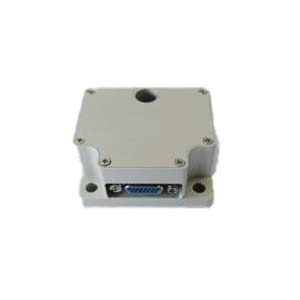How does a MEMS IMU work?
A MEMS IMU (Microelectromechanical Systems Inertial Measurement Unit) is a miniaturized sensor system that measures the orientation, acceleration, and angular velocity of an object in three-dimensional space. It is widely used in various applications, including aerospace, robotics, navigation systems, and virtual reality. Here's how a MEMS IMU works:
1. MEMS Sensors: At the core of a MEMS IMU are the MEMS sensors. These sensors are microscopic devices that use microfabrication techniques to integrate mechanical and electrical components on a single chip. The two primary types of MEMS sensors used in an IMU are:
Accelerometers: These sensors measure linear acceleration along the three axes (X, Y, Z). They work based on the principle of detecting changes in capacitance, piezoelectric effect, or resistive changes caused by the acceleration forces acting on a tiny mass within the sensor.
Gyroscopes: Gyroscopes in a MEMS IMU measure the angular velocity or rate of rotation around the three axes. They operate using the Coriolis effect, where the rotation of the device causes a vibrating mass to experience a deflection, which is detected and measured as the angular velocity.
2. Sensor Fusion: A MEMS IMU uses a process called sensor fusion to combine the data from multiple sensors to obtain accurate and reliable measurements of the object's motion. This is crucial because each sensor has its limitations and may suffer from noise, bias, or drift.

3. Data Processing and Calibration: The raw data from the sensors undergoes sophisticated data processing algorithms and calibration to account for errors, cross-axis sensitivities, and drift. Calibration ensures that the IMU provides accurate and consistent readings over time.
4. Inertial Navigation: By continuously measuring the acceleration and angular velocity of the object, the MEMS IMU can calculate its change in position and orientation over time. This data is used for inertial navigation, where the IMU integrates acceleration and angular velocity to estimate the object's position, velocity, and orientation in real-time.
See also:Quartz Flexible Accelerometer: Advancing Precision Measurement and Monitoring
Spherical vs. Aspheric Lenses: A Clear Perspective
What is the difference between chromatic and achromatic lens?
The Science Behind Engine Test Benches: Unlocking Performance and Efficiency
Know the Features of the Multihead Weigher?
What is the passive seismic method?
5. Integration with External Systems: A MEMS IMU can be integrated with other external systems, such as GPS receivers or magnetometers, to enhance its accuracy and provide a more robust navigation solution. By combining data from multiple sensors, the IMU can overcome some of the limitations associated with standalone sensors.
Advantages of MEMS IMUs: MEMS IMUs offer several advantages over traditional bulky and expensive inertial measurement units:
Miniaturization: MEMS IMUs are small and lightweight, making them ideal for applications where space and weight are critical factors.
Low Power Consumption: MEMS IMUs consume less power, making them suitable for battery-operated devices and applications.
Cost-Effectiveness: MEMS IMUs are more cost-effective to produce compared to traditional IMUs, making them accessible for a wide range of consumer and industrial applications.
In conclusion, a High Performance MEMS IMU is a sophisticated sensor system that combines microelectromechanical sensors, sensor fusion algorithms, and calibration techniques to accurately measure the orientation, acceleration, and angular velocity of an object in three-dimensional space. Its small size, low power consumption, and cost-effectiveness make it a popular choice for a variety of applications requiring motion sensing and navigation capabilities.
Unleashing the Potential of 3D Seismic Exploration.
Stay Prepared for Earthquakes with Seismic Monitor
Unlock the Power of Smartsolo Nodes: Your Guide to Optimal Performance
Revolutionizing Seismology: Are 3 Component Geophones game-changers?
Unlocking Success: Seismic Crew Consultants Top Tips
What are the benefits of using short-period seismic nodes for monitoring earthquakes?
How Smart Seismic Sensor 1c Works









